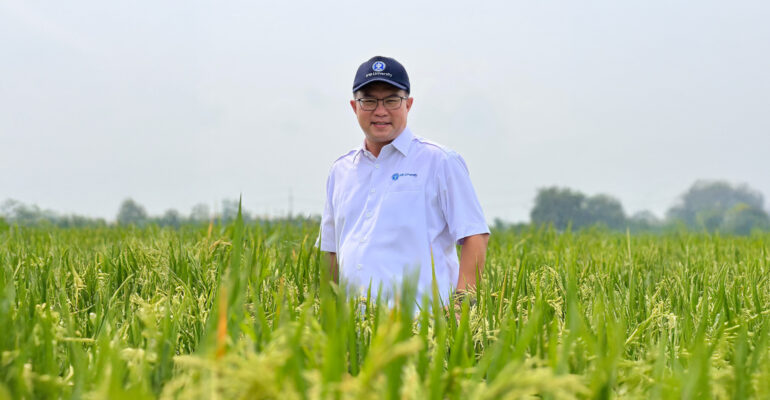Customer First vs Student First

During a visit to Silicon Valley, Palo Alto, I took the time to visit and meet one of the Directors of Amazon Web Service (AWS), a leading global company under the Amazon Group. Initially, Amazon developed technologies for internal use only, such as Amazon Simple Queue Service (SQS), Simple Storage Service (S3), and Elastic Compute Cloud (EC2). Then since 2006, AWS was officially launched to provide external services for companies in the fields of computing, data storage, networking, analytics, and so on. Even now it also serves application development for various activities, including smart agriculture.
Last week I met one of the directors of Rijk Zwaan in Westland. Rijk Zwaan is a family-run seed company that has been operating in the Netherlands for almost 100 years. With 40% of its employees working in R&D, it is now a Top 5 seed company in the world and has about 10% of the world’s market share.
Why are they successful? The AWS director answers, “Customer first!” The director of Rijk Zwaan answered, “People First”, which shifts the profit orientation to increasing added value for customers. This means that AWS and Rijk Zwaan strive to prioritize customer satisfaction by creating positive experiences for customers.
All innovations are for customer satisfaction. All to make it easier for customers in all their affairs. Putting customers first is the company’s main principle. It is therefore important to understand customer needs, as well as predict future customer needs.
Are the principles of AWS and Rijk Zwaan relevant for universities like IPB? We are not a business institution like them. But the principle of customer first should be considered, because the “core business” of HEIs is to produce excellent graduates whose process requires excellent service. Although students cannot be fully considered “customers”, because they are collaborative partners in the process of university development.
What is clear is that students must receive the best service in the learning process. Thus, the principle of customer first needs to be transformed into the principle of “student first”. With this principle, we must prioritize students, care for students, and make them experience positive experiences so that their current and future needs are met.
The transformation of the customer first principle into student first in the context of IPB University is realized through curriculum development that is relevant, flexible, and adaptive to student needs and future challenges. Students are positioned as active partners in the learning process that not only focuses on knowledge transfer, but also on character development and self capacity (skillset building) and global competitiveness.
This is reflected in the 2020 Curriculum, which opens space for enrichment through the exploration of cross-disciplinary interests and competencies, and is being strengthened in the upcoming 2025 Curriculum, which emphasizes the integration of technology, especially the use of artificial intelligence (AI) in the teaching and learning process.
With this approach, student first at IPB is not just a slogan, but an institutional framework that encourages meaningful, impactful, responsive, and future-oriented learning (future practices).
What are other concrete steps? We are not perfect yet, but we have tried to implement this student first principle. There are at least 11 services for students that we have developed, which may be a differentiator with other campuses.
First, in the first year IPB students follow talent mapping as a material for the direction of student and career development. So student career development is done early and data-based.
Second, for students who are interested in entrepreneurship, entrepreneurship programs are provided through One Village One CEO (OVOC), startup school, CEO school, young agripreneur camp, innopreneurship center, and startup center. Now, some of the program participants have become exporters of agricultural products to foreign countries. We also provide competitive start-up capital for students participating in the program.
Third, students are also required to participate in 7 Habits training inspired by Stephen Covey’s book, so that students have a proactive spirit and positive mindset (growth mindset).
Fourth, IPB Mobile super apps are available for students to facilitate the learning process and campus life digitally with features that are always evolving. There is also an IPB Mobile application for alumni and parents so that parents can monitor their children.
Fifth, 8500 free microcredentials accounts are provided, to increase student competence with current knowledge and skills. This is important to respond to world trends about the importance of microcredentials for student careers.
Sixth, free zoom premium account for all students (except first-year students), which allows students to do online activities better.
Seventh, free Microsoft Office software for all students.
Eighth, Integrated Service Center (ISC) that serves 239 academic and non-academic matters both online and offline.
Ninth, there is an on boarding program for graduates who have not been able to work for more than six months. They can do reskilling on campus for free.
Tenth, leadership programs through leadership dormitories and together with HA IPB develop mentoring leaders, to produce prospective leaders.
Eleventh, the policy that underprivileged students should not be dropped out just because they cannot pay UKT. Also the existence of YAPI HA IPB which always cares for underprivileged students at IPB.
Then what other services are important for students? There is a saying: an ordinary lecturer can only convey, a good lecturer can explain, and a great lecturer can inspire.
To inspire is to move students to think, learn, and move for progress. Let’s continue to spread inspiration to students. You can inspire with words, but it’s better with work. This is actually the most important thing in the principle of student first. (IAAS/LAN)
Denhaag, May 2, 2025


